CF journey traveled one bead at a time
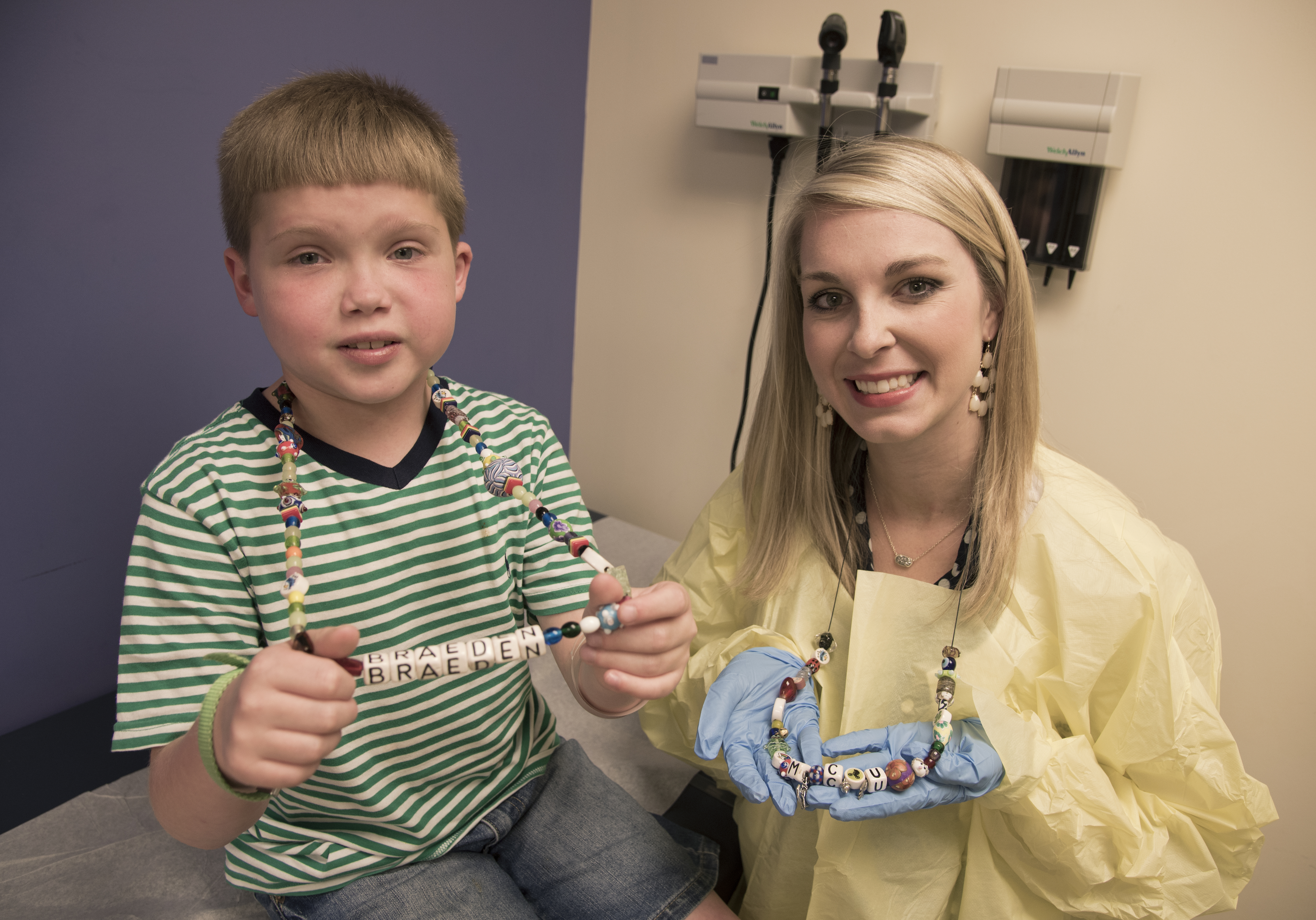
For every bead, there's a story of courage.
Red ones tell the story of blood transfusions. Magenta beads tell the tales of courage during ambulance rides. Pokes from blood draws turn into jet black beads, and aqua ones represent catheters and tubes. Silvery anchors tell of bravery and support during the “stormy seas” of treatment, and meeting medication and mobility challenges are symbolized by beads that are bumpy, just as life sometimes is for a child with cystic fibrosis.
Patients with CF being treated by pediatric pulmonologists at Batson Children's Hospital get their bling-bling from the “bead fairy,” social worker Melissa Underwood. For the past two years or so, Batson Children's Hospital has been the only site in Mississippi to implement the Beads of Courage program as a psychosocial and emotional intervention. Through the program, children and teens are able to record, own, and tell their stories of courage.
“My favorite one is the blue swirly one,” said patient Braeden Johnson of Philadelphia, “and the stars. Those show I've had surgery."
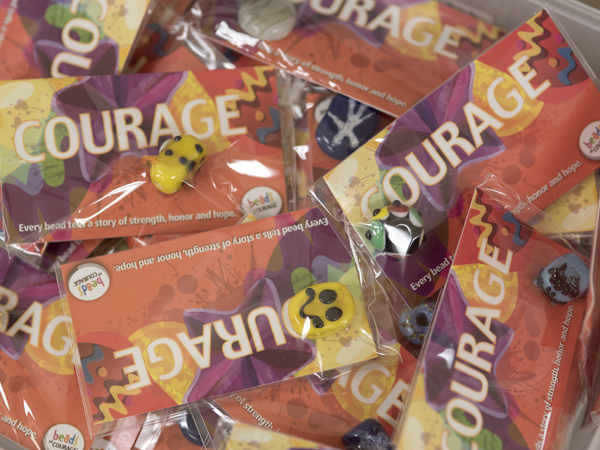
Founded by Arizona pediatric oncology nurse Jean Gribbon, Beads of Courage seeks to give children undergoing lengthy and arduous treatments for serious medical conditions something tangible to represent the courage to face what they've gone through. Starting with children and teens with cancer and blood conditions, the meaningful arts-in-medicine program has expanded to, among others, patients with cardiac conditions, neonatal intensive care unit stays, burn injuries and other chronic illnesses, including CF.
Through Beads of Courage, children receive colorful beads that symbolize each step of their treatment journey. The beads they receive provide a powerful dose of narrative medicine that visually translates their treatment experience and helps them cope with the many uncertainties of their treatment journey. Beads of Courage programs currently support more than 260 participating member hospitals in the United States, Japan, New Zealand, Canada, the United Kingdom, and Australia.
Cystic fibrosis is a progressive genetic disease that causes persistent lung infections and limits the ability to breathe over time. In the pancreas, mucus prevents the release of digestive enzymes needed for the body to break down food and absorb nutrients. There is no cure for CF.
Batson Children's Hospital, the only accredited CF treatment center in the state, follows 72 pediatric patients with the disease. Since 2004, all newborns are tested for CF, so patients here start their Beads of Courage collections early with a cord, a Children's of Mississippi bead and a Beads of Courage logo bead.
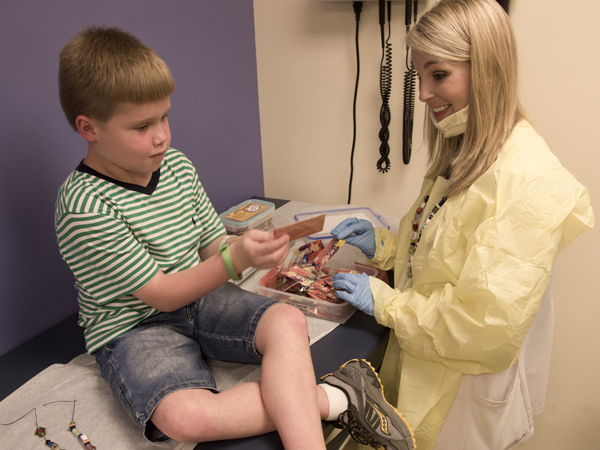
The strings of beads are long and multicolored, a tangible record of the courage displayed for medical experiences including doctor visits and treatments. “This is important for these patients,” said Underwood. “Patients with CF might not look sick, but these kids have these beads to say, 'Look where I've been. Look what I've gone through.”
The beads come fast for CF patients. “They really rack up the yellow ones,” Underwood said. “Those are the ones for overnight hospital stays.”
Stars represent the courage to face surgery, and hearts represent bravery for ICU visits. There are birthday beads, silver beads for chaplain and pastoral care visits and rainbows for seeing multiple medical specialists. More elaborate beads signify acts of courage, in battling CF and in living life with the disease.
“One of our patients received her Act of Courage bead after talking on the radio during the Mississippi Miracles Radiothon,” said Underwood.
They also help patients celebrate the determination and courage it takes to follow their care plan, she said. “If the doctor says he'd like to see a patient gain this many pounds before their next visit, and the patient does, then that patient gets a ceramic special selection bead to acknowledge their courage to care for themselves and follow the care plan that's best for them.”
Braeden, 9, of Philadelphia keeps up with his own medical chart at home, so when he came in for a visit with Dr. Marc Majure on Thursday, he got to pick out special beads showing his progress. There were a couple of fish for traveling to care along with other colorful glass beads to signify his courage on his treatment journey.
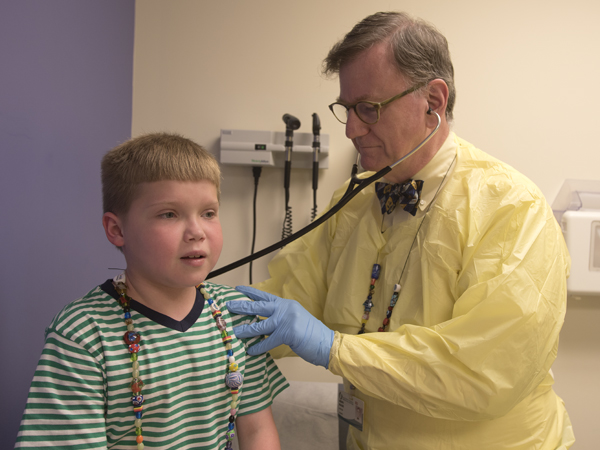
The third-grader, who likes to play right field in baseball and helps take up the offering at Grace Baptist Church evening services, said the beads keep him motivated. “I think they're cool,” he said.
“Braeden looks forward to visits,” Braeden's mother Stephanie Johnson said of seeing his specialists. “He looks forward to seeing what beads he'll get the next time he comes in.”
Dr. Majure, professor of pediatric pulmonology at UMMC, said the beads are “a tangible way of telling the entire family's journey, and it's a common bond for patients, who can show each other the beads they've collected.”
Some beads, the Helping Hands and the Acorn for Strength, are meant to boost patients' morale when they're going through something hard, Underwood said, a “psycho-social stressor.” They get added to the string so that “any time my kids go through something, they can look at that bead and know that their care team is thinking about them and loves them.”
Beads of Courage travel in colorful cloth bags. “Sometimes, the family realizes they left the string of beads at home, and there is a meltdown,” Underwood said, but they get beads to take home.
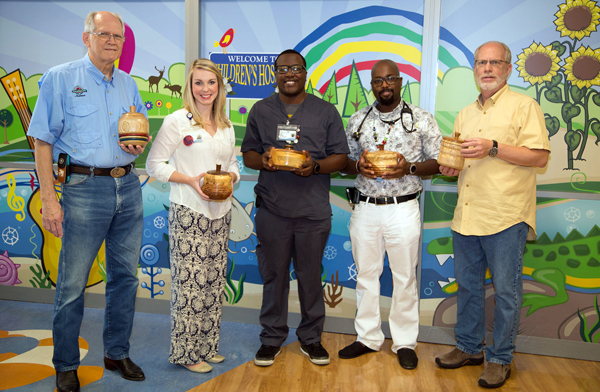
Members of Magnolia Woodturners, who meet at the Simpson County branch of Copiah-Lincoln Community College, have crafted wooden bowls, each taking months to make, for bead storage, said Gerald Lawrence, treasurer and webmaster for the 56-member group. Beads of Courage partners with woodturning groups all over the world and the American Association of Woodturners, who donate hand-turned lidded bowls to Beads of Courage members to have a vessel to hold their beads.
Since there are not enough bowls to go to all patients being followed by the program at Batson Children's Hospital, the bowls have gone to families whose children have earned the butterfly bead, a glittering winged piece of iridescent glass that memorializes patients who died of the disease or its complications.
“We wanted to give back to the community,” said Lawrence, “and this (woodturning) is what we do."

“Talking with the Joint Commission (on Hospital Accreditation) was an Act of Courage bead,” Underwood said of the bead respiratory therapist Pridgett Presley was awarded.
Dr. David Josey, assistant professor of pediatric pulmonology, has fish and frogs among the other beads on his string, but his favorite is the red heart. “That one symbolizes caring for children.”


